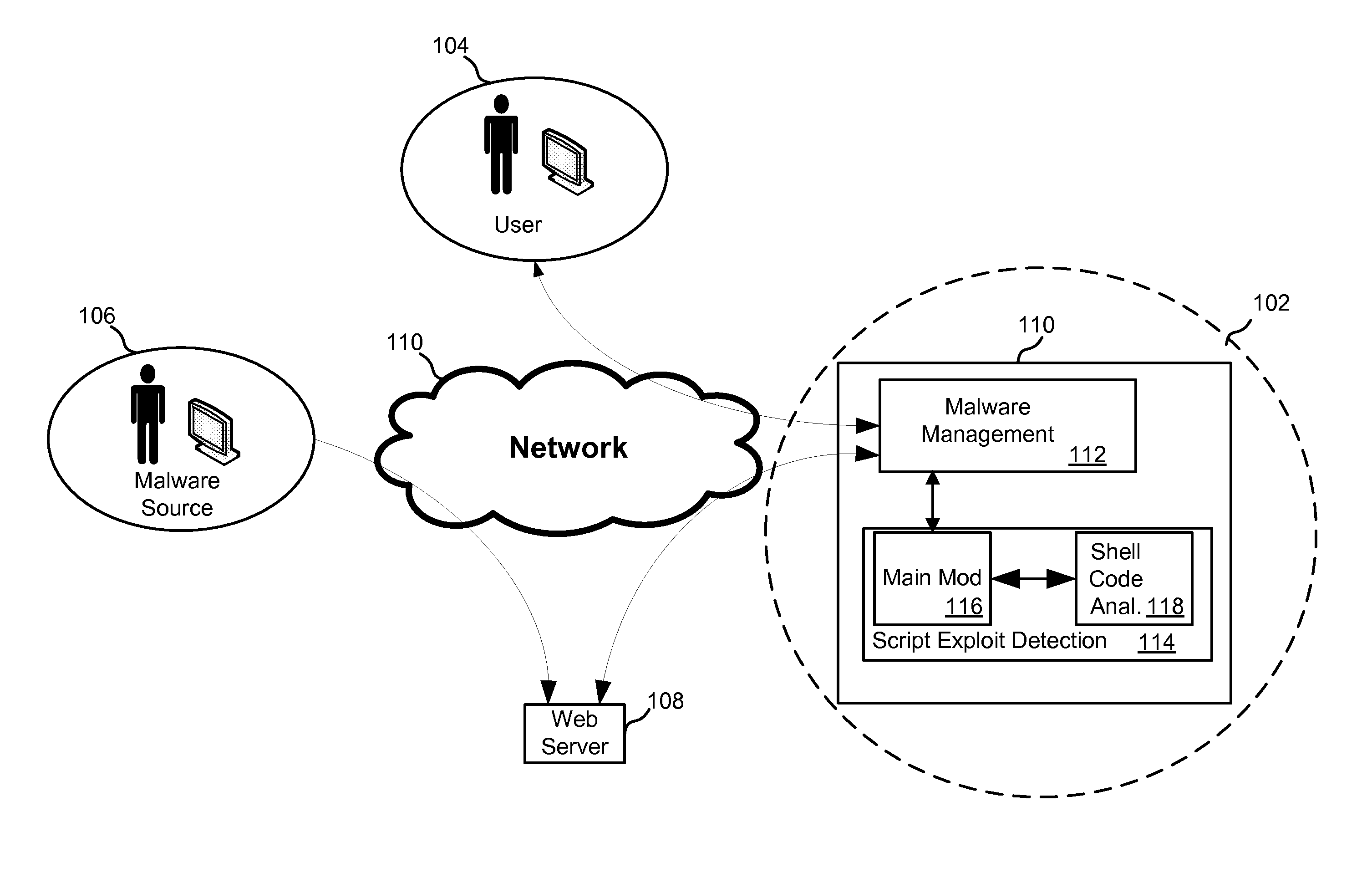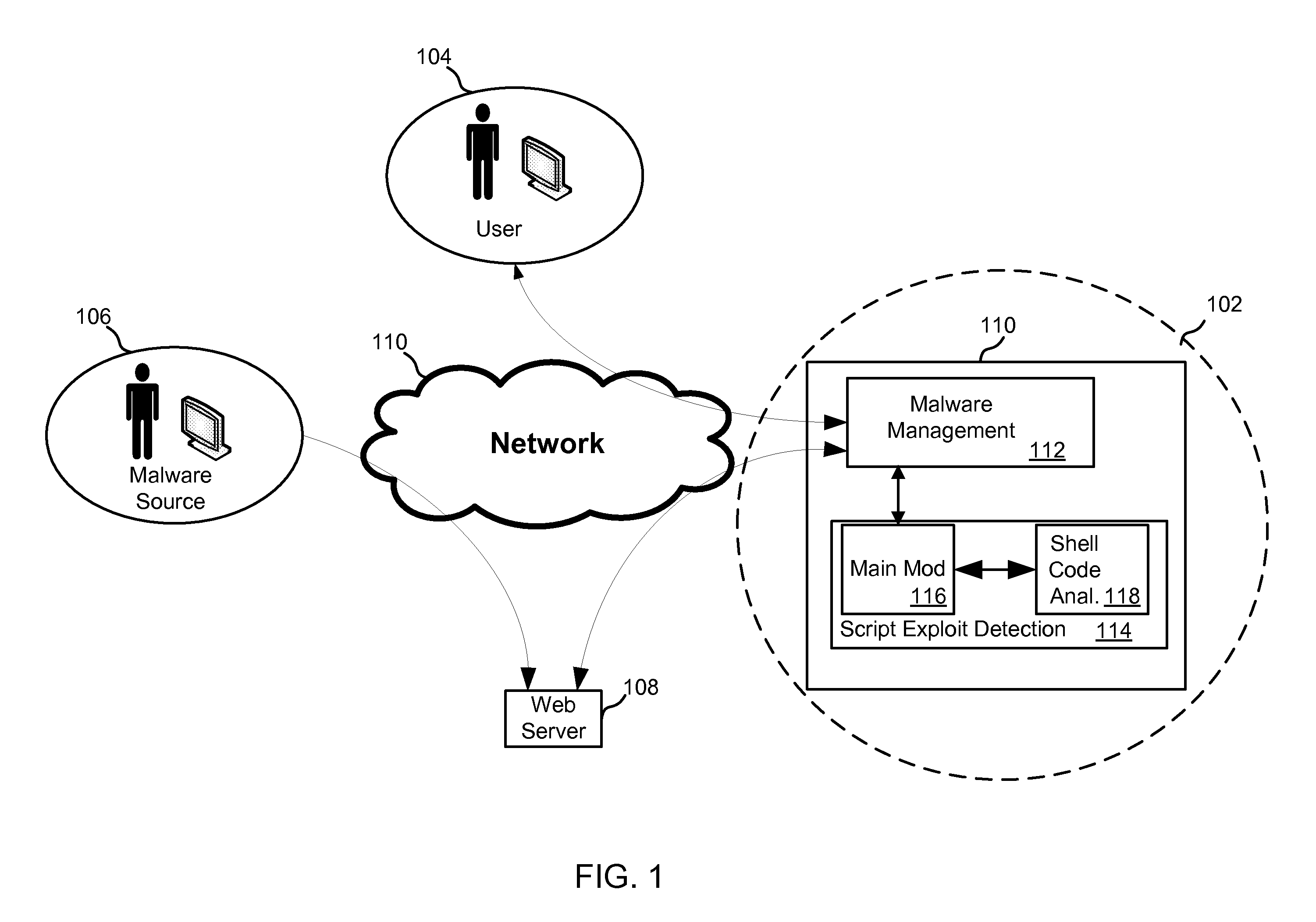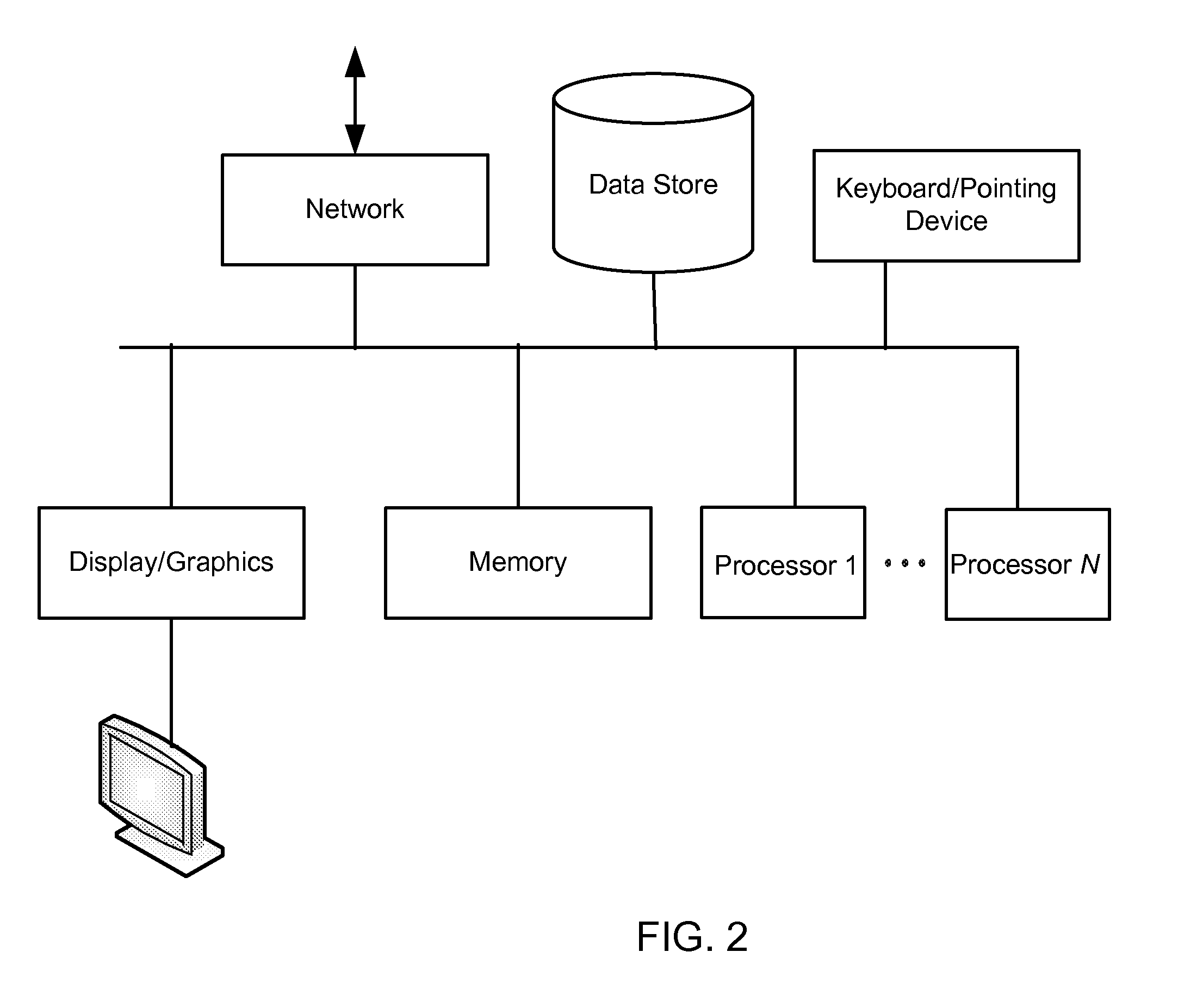Detection of scripting-language-based exploits using parse tree transformation
a scripting language and parse tree technology, applied in the field of computer system protection technologies, can solve problems such as privacy or system performance, high malicious malware, etc., and achieve the effect of reducing the complexity of the parse tree and reducing the level of string splitting
- Summary
- Abstract
- Description
- Claims
- Application Information
AI Technical Summary
Benefits of technology
Problems solved by technology
Method used
Image
Examples
Embodiment Construction
1;
[0017]FIG. 7 is a flowchart depicting steps of a method that are traversed in connection with some embodiments of the present invention;
[0018]FIG. 8A-8F are flowcharts depicting rule checks traversed in connection with a scoring analysis;
[0019]FIG. 9 is a block diagram depicting another exemplary embodiment of the main module of the threat protection portion described with reference to FIG. 1;
[0020]FIG. 10 is a flowchart depicting steps of a method that are traversed in connection with some embodiments of the present invention;
[0021]FIG. 11 is a block diagram depicting an exemplary embodiment of the initial filter and parser component described with reference to FIG. 9; and
[0022]FIG. 12 is a block diagram depicting a process flow that may be carried out by the normalization and signature matching component described with reference to FIG. 9.
DETAILED DESCRIPTION
[0023]Referring now to the drawings, where like or similar elements are designated with identical reference numerals throu...
PUM
 Login to View More
Login to View More Abstract
Description
Claims
Application Information
 Login to View More
Login to View More - R&D
- Intellectual Property
- Life Sciences
- Materials
- Tech Scout
- Unparalleled Data Quality
- Higher Quality Content
- 60% Fewer Hallucinations
Browse by: Latest US Patents, China's latest patents, Technical Efficacy Thesaurus, Application Domain, Technology Topic, Popular Technical Reports.
© 2025 PatSnap. All rights reserved.Legal|Privacy policy|Modern Slavery Act Transparency Statement|Sitemap|About US| Contact US: help@patsnap.com



